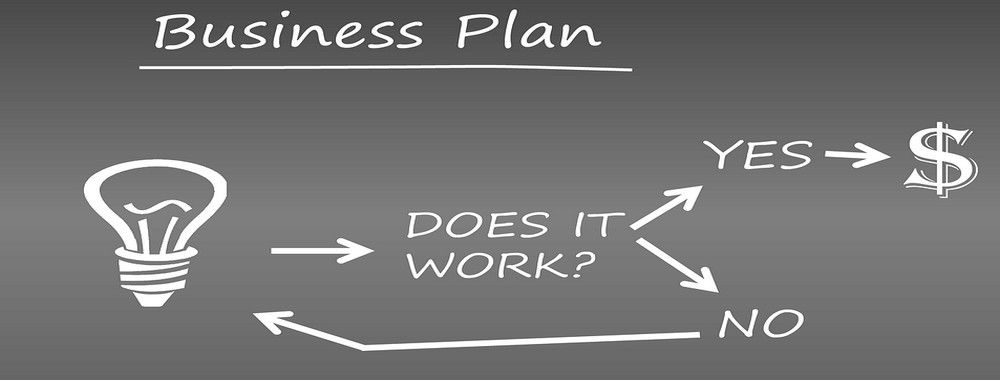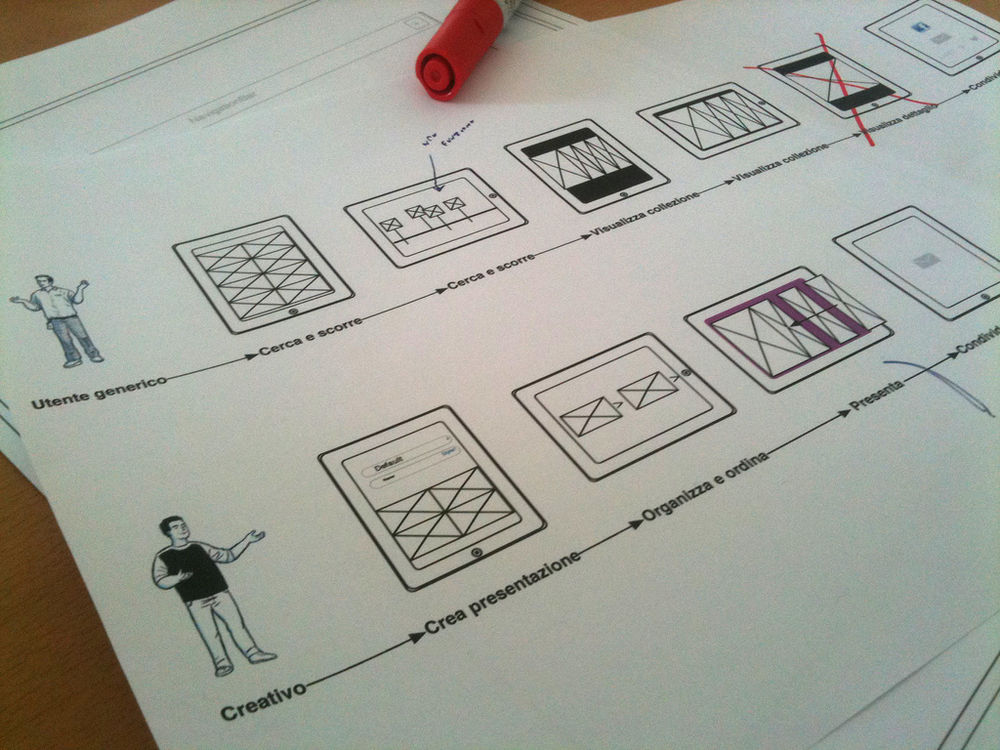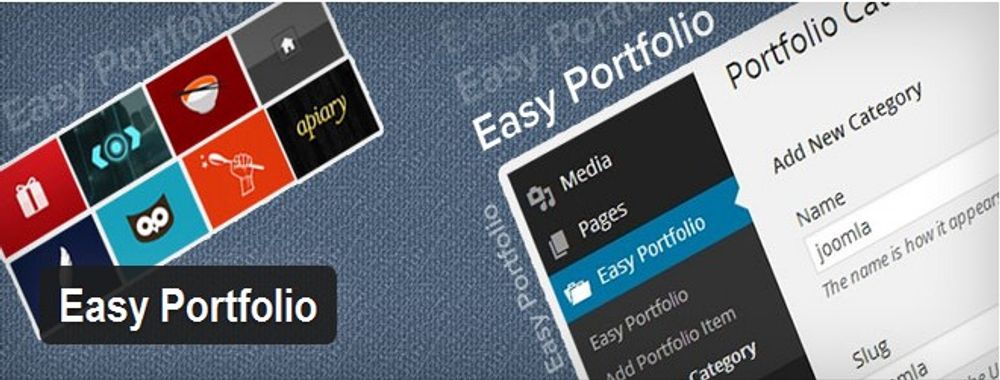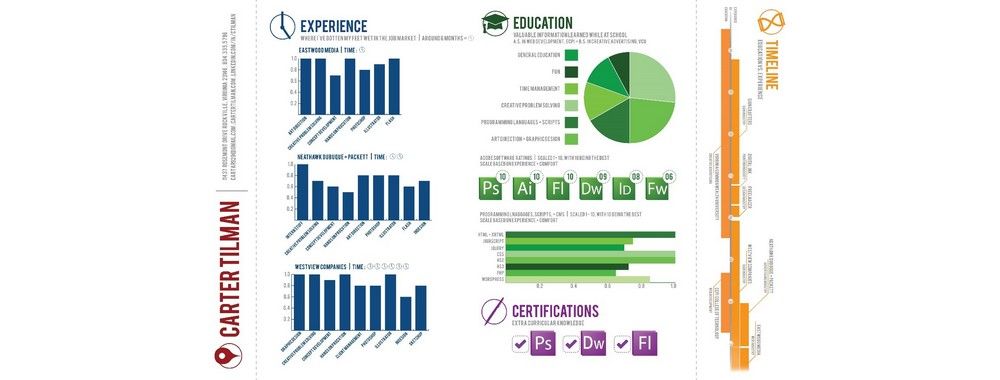Planning a business means planning to succeed in business. A business plan helps you define what you do so that you can explain this clearly and succinctly to customers. It helps you see if your plans are going astray so that you can take corrective action. It helps you think about your position in your market and how to be competitive.
It’s worth noting that there are different schools of thought on business planning. Some people argue it’s unnecessary, such as the authors of Rework, Jason Fried and David Heinemeier Hansson, who also founded 37 Signals and created Ruby on Rails. Some say that it’s essential such as Richard Branson, the founder of Virgin. Others, such as the Interaction Design Foundation, try to take a middle path like the one we’ve detailed for you here.
We advocate for a simple plan that helps you towards your goals and keeps you on track without getting you bogged down forever in writing that plan.
Not every business has a business plan, but businesses that do tend to do much better than those that don’t have one. Some very good reasons to have a business plan include:
It helps you to define what your business is (and isn’t) about.
It helps you plan how to sell and market your services.
It can define your current objectives and help you evaluate your progress against them.
It can help to raise funding or with a loan application.
It can help to define relationships between business partners (including expectations and how to end such a partnership if things don’t work out).
It can help you value a business if you want to sell it.
Here, we will help you get started creating your business plan whether you’re a freelancer or an entrepreneur. You’ll get to know what goes into a business plan for a start-up business. It’s enough to get you started.
Now, this article can’t teach you everything you need to know about business planning. Excellent books that run to hundreds of pages which define everything in detail for a complex business plan await you on a shelf or in a warehouse. Using these, when your business grows bigger and more successful, you’ll have to find more in-depth knowledge and advice. When you’re 6 to 24 months down the road and need to develop your business plan further, that’ll probably be the right time to pick up one of those heavy books and start a more in-depth planning exercise.

Author/Copyright holder: Philip Wilson. Copyright terms and licence: CC BY-ND 2.0
Planning a business means planning to succeed in business.
What Should Be In Your First Business Plan?
Your first business plan will be for your own use, so it doesn’t need to be a thing of beauty which has been professionally polished. It shouldn’t be more than a couple of pages. You can save that long, polished business plan for the day that you want to use the plan to secure investment in your business or to help you guide your employees in the right direction. It should take a maximum of one day to create your first business plan.
Your First Business Plan Should Include
1. A brief company description
The name of your company, the date it was formed, the names of any shareholders, your company registration number, your address, etc. In the future, you’ll add a bit more detail to this section and add important milestones in the development of your business. To start, keep it short and simple.
2. A description of the services you offer
This should also include a description of how they stand out (your unique selling points – USPs) from your competition. For example, it might be that your logo design is proven to increase brand recognition by 40% or that your sales copy delivers increased sales by 25%.
3. A simple market analysis
Who are your customers? Who are your competitors? What’s the size of the market you will serve? How will the market grow in the next few years? You should make a simple SWOT analysis where you define the opportunities and the threats in your market as well as your business’s strengths and weaknesses: nothing too complex—just enough detail to be sure that you understand the market you are working in.
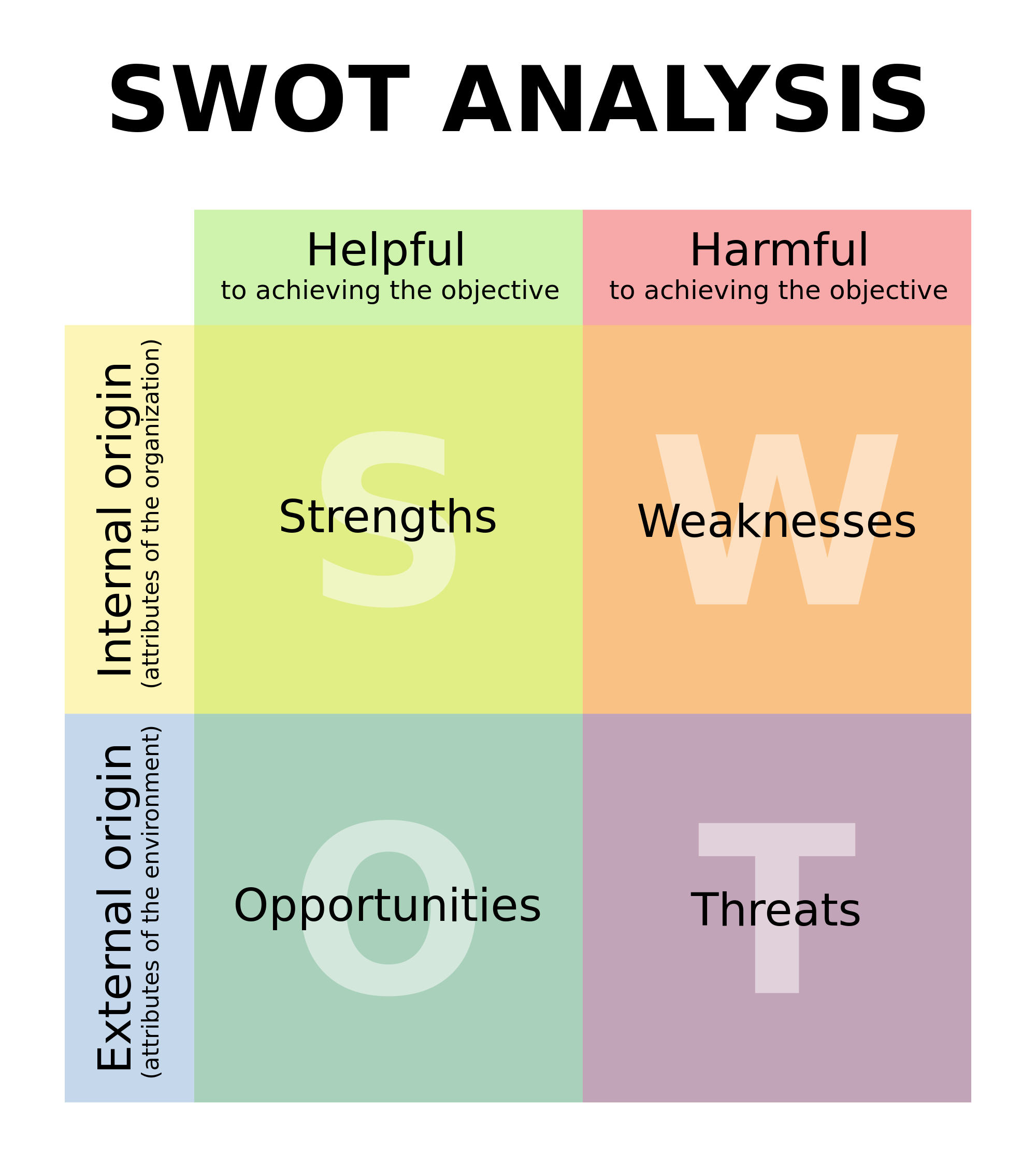 Author/Copyright holder: Xhienne. Copyright terms and licence: CC BY-SA 2.5
Author/Copyright holder: Xhienne. Copyright terms and licence: CC BY-SA 2.5
Market analysis is often done using a simple SWOT analysis – where you assess the strengths, weaknesses, opportunities and threats of your business and competitors.
4. An implementation strategy
How will you sell your services? How will you put those plans into action? What milestones will you use to show progress in your plan?
5. A personal summary
In essence, this a canned version of your CV—what’s your background? Your key accomplishments? Your overall relevant experience?
6. A financial plan
What are your projected sales? What will your cash flow look like? How much profit do you expect to make? For this exercise, be pessimistic and realistic; do not assume you will be working for forty hours a week, every week, at your maximum rate from the outset. It’s unlikely that you will achieve that—ever. It’s much better to underestimate your financial performance and overachieve than vice versa. Never forget that you’re going to spend a lot of time on unpaid work, from accounting to marketing to administration. And, perhaps, you would like some time for vacation as well?
7. A short summary or executive summary
The summary is often called the “executive summary”, of the whole plan. This will help when you come to selling your services; it’s the basis of your elevator pitch – which is what you’d say to your ideal clients if you were trapped in an elevator with them for five minutes.
Your executive summary should include:
what your core service is
who your main customers are
why they should choose you and your services over your competitors
how you will sell your services
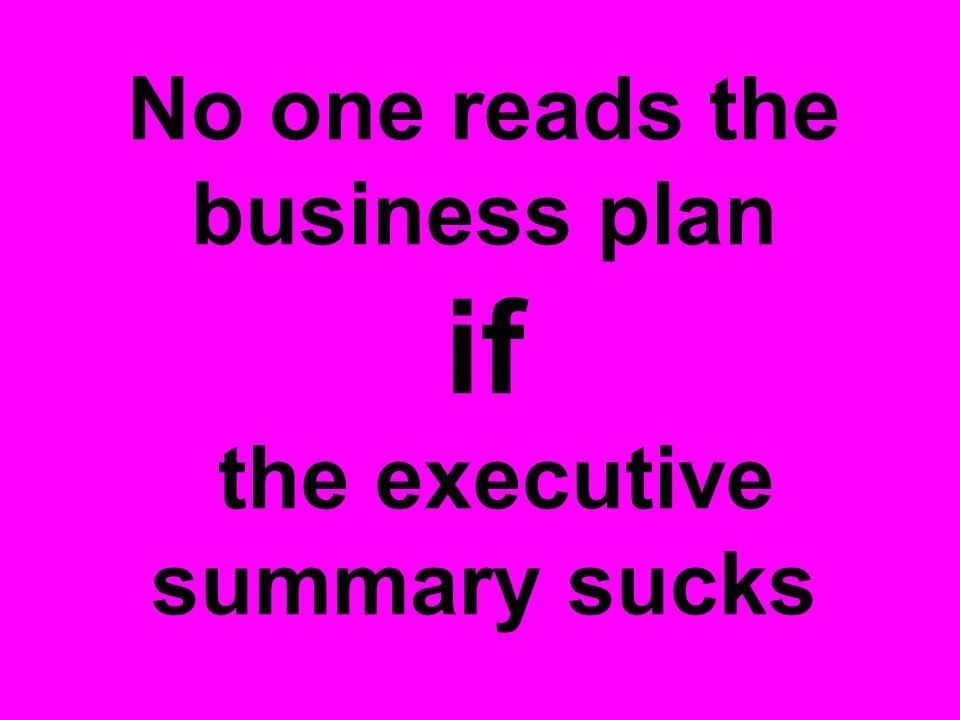 Author/Copyright holder: http://klarititemplateshop.com/. Copyright terms and licence: CC BY 2.0
Author/Copyright holder: http://klarititemplateshop.com/. Copyright terms and licence: CC BY 2.0
It can’t be clearer than, this can it? You would think that it doesn’t matter if your executive summary sucks if it’s only meant for yourself. But really, the executive summary can be your biggest help and guide in understanding and summarizing what your main services are, what makes your services more attractive than your competitors’, who you sell your services to and how you sell them.
It takes time to develop your elevator pitch and executive summary as it should only sum up the very essence of your business plan. That’s why you should start by defining the rest of your business plan and then, at the very end of your process of making your business plan, you’ll be able to define the essence and the executive summary of your business plan.
You should always place your executive summary in the very beginning of your business plan.
Best practice: Ideally, you’ll be able to explain your executive summary as an elevator pitch in only a few sentences. You should continue working on your executive summary until you are able to explain your perfect pitch in one minute. You should also practice an elaborated version of your pitch which should take approximately five minutes. You’ll find it harder to explain yourself in one minute than in five.
You can start practicing by inserting your answers into this short sentence: “My core service is (xxx) which is essential to (xx customers), because I can help them (in xx ways) compared to my competitors.”
When you think you’ve nailed the two versions of your elevator pitch, you should try saying it out loud, and when you can say it in approximately one- and five-minute versions, you should pitch your executive summaries to your friends, family, and, of course, your peers—and get their feedback before you reach out to your future clients.
You’ll find that you will improve your pitch every time you practice it. Most likely, you will find that for each pitch you make, you can make it shorter and more precise. Your friends’ and peers’ questions and feedback will help you crystallize what your soon-to-be business is all about.
It may feel a bit odd the first few times you try your pitch, but you’ll soon understand that this is the best way to get to the core of what you will be doing as a freelancer or entrepreneur. This way, it will be much easier to move from planning to executing the plan in the near future.
Length of your first business plan
Keep your plan as short as possible. Aim for two pages. A short, simple plan is easy to review and refer to. If you write something resembling a book, it will serve no purpose except to take up a lot of time that could be spent doing something useful when you write it. You’ll never want to read it or see it again if it’s that long. Keep it short, sweet and to the point.
The Take Away
A business plan serves a purpose for a start-up whether you’re a freelancer or an entrepreneur. It helps you define what you do so that you can explain this clearly and succinctly to customers. It helps you see if your plans are going astray so that you can take corrective action. It helps you think about your position in your market and how to be competitive.
Writing a business plan for your own use should be a simple, straightforward exercise. You don’t need to worry about presentation, spelling or grammar – no one else will see it. You just need to capture the relevant information.
Later on, when your business is better established, you’ll want to update the plan, and if you then intend to show it to other people, you might want to read up on how to develop a more complex plan.
You might also, at that point, consider using a software tool for writing your business plan. However, to start with—keep it simple. Don’t get bogged down with the process; if you spend more than a day on this, you’re spending too much time and overthinking things. You can always go back and correct your business plan’s course when you’ve started working.
References & Where to Learn More
Hero Image: Author/Copyright holder: Pixabay. Copyright terms and licence: CC0
You can also find some great example business plans here: 500+ Free business plan examples
